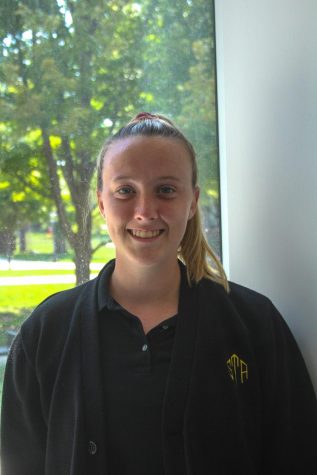Risking safety for spring break ’21
Spring break is upon us, and with the pandemic still in our midst, students and faculty share their thoughts on coming back to school and traveling.
March 13, 2021
“Overall, I think [flying is] pretty risky,” science teacher Matthew Lewis said. “Flying anywhere, that just seems like, to me, a bad idea. You’re trapped in a small container with a whole bunch of people for so many hours, and we’ve seen how well everybody wears their masks.”
St. Teresa’s Academy, along with every school in the Kansas City area, were forced to close their doors just before spring break 2020 due to the COVID-19 pandemic. Many people still chose to go on their spring break trips that year, to destinations like Mexico or Colorado. Now, with over 28.9 million cases in the U.S. and 117 million in the world, according to the John Hopkins University live map as of March 8, spring break traveling is risky.
Travelling over the course of the year has been a difficult and growing discussion on social media platforms such as TikTok and Twitter due to the rise and fall of cases. This discussion is popular especially among teenagers, specifically Generation Z and Millennials, as they watch politicians, celebrities and influencers travel both domestically and internationally. Lewis views traveling during spring break as a risk to not only travelers, but the people they come in contact with.
“But right now, [the] caseload where we’re at, is about where we were in August of this last year when we were all freaking out,” Lewis said. “And then we had this huge spike recently, a huge spike over the past couple of months of cases and deaths nationally, and we’re coming down off of that spike, so we’re now back to that level.”
According to healthline, COVID-19 case numbers are decreasing after their spike over the winter during Christmas and through the new year. This year’s spring break traveling may be easy for most STA students, considering some have already been exposed, contracted and recovered from the virus, or they are going to low risk areas. Recently, senior Morgan Mos traveled to Disney World with her immediate family and friends and has had no issues upon her return.
“I think there is a risk, even going to school or going to the grocery store, but I’ve evaluated those risks, and I know that I don’t personally expose anyone in my household who is at high risk,” Mos said. “I monitor symptoms to make sure I don’t have anything before I go out into the world.”
Traveling during this year’s spring break also brings to light the fact that some students will return to campus after long trips. As of March 8, the school has not sent any emails to the STA community about guidelines, such as the ones set in at the beginning of the year in the Campus Reopening Plan found on the STA website, for people who may be traveling to a high risk area, or traveling in a high risk way to cities and states that may have more cases than Kansas City.
“I’m not as worried about them coming back from spring break,” Lewis said. “I am worried, of them coming back and spreading it to other students, and those students, families, and putting us into hybrid or virtual. I think a quarantine would be safe and the smart way to go.”
While there is a possibility of COVID-19 being transmitted back to STA students and faculty due to, there are others, such as Mos and Lewis, who believe that the school will still be a safe space after the break. Mos said that it is up to the traveling student to be responsible on their own trip.
“I think that they need to take responsibility and make sure that whatever they’re doing is obviously the proper thing to do for coming back to school,” Mos said. “I’m comfortable but I know that some of my fellow students might not be comfortable with people who are in larger groups coming back.”
The CDC recommends that anyone who is traveling on a plane, bus, or any transportation vehicles wear a mask while on and test negative before and after a long trip in an area you may not normally reside in. Sophomore Maya Charlesworth believes that staying home would be a better alternative to traveling.
“I’m a little jealous, but I’m actually okay with staying home because I don’t want to risk getting it or risk having my friend get me sick, or anything like that,” Charlesworth said. “I’m pretty happy with it.”
In regards to STA’s return, there will be some students coming back from traveling out of the country, and more traveling out of state according to a poll the Dart ran on @dartnewsonline Instagram Feb. 18. Lewis believed that a negative test or two could be effective before returning to school and before the trip to keep all parties safe. Charlesworth and Mos agreed.
“I think that they should get a COVID test after they get back,” Charlesworth said. “And then, if they are positive, obviously, quarantine. But either get a COVID test or quarantine two weeks.”
Mos confirmed that she and the friends she is traveling with are getting tested before traveling over spring break.
“In my personal opinion, I think if you are traveling to somewhere that has a lot more cases, or is considered a hotspot, that you should get tested afterwards, or if you’re traveling from somewhere to another place that doesn’t have a lot of cases to get tested before,” Mos said. “I think it’s up to the person and also it depends on different circumstances.”
Traveling is a choice, and in the end, no one has a say in what other people may do over spring break with their own free time.
“I don’t really like to show everyone what is going on in my personal life,” Mos said. “I think that if someone wants to judge me, that’s their choice but it’s also my choice to travel and my choice to be responsible when I travel.”




